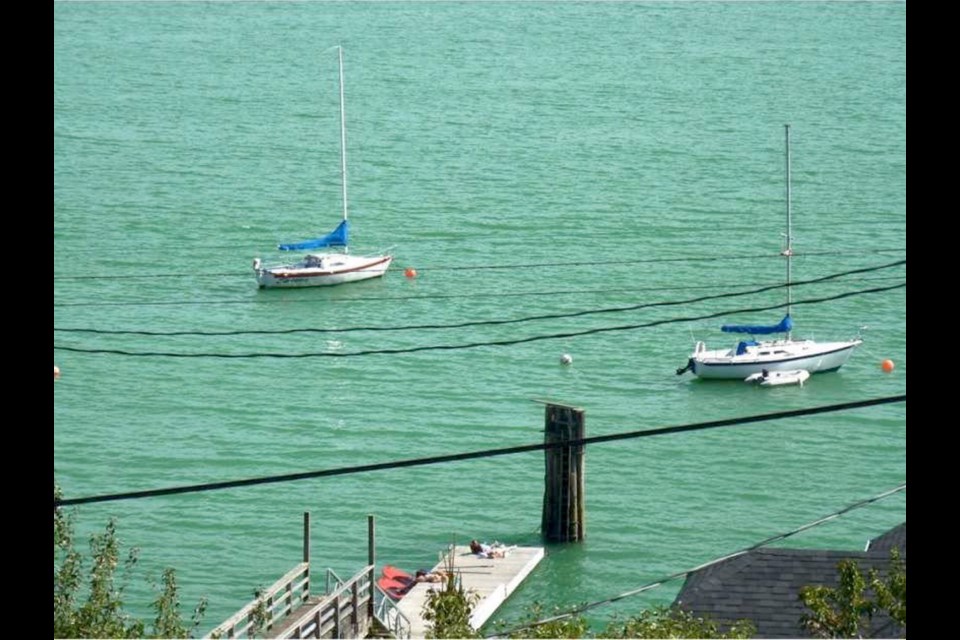VANCOUVER — The green water that stretches from the southern Gulf Islands, up the Strait of Georgia and Howe Sound north to Desolation Sound, is proving to be a bit of a mystery.
Nicky Haigh, the program director of the Harmful Algae Monitoring Program at Vancouver Island University, said the culprit is a harmless, widespread micro-algae called cocclith-ophorids.
“They are micro-algae that reflect light and make the water look chalky. They aren’t harmful. When you get a bloom, the water goes a glacier-bluish-green colour,” Haigh said.
“It’s spreading quite impressibly from the Gulf Islands to Desolation Sound. The blooms do get very big. They can stretch a long way,” she said. “It’s not glacier melt — although it is the same colour.
“Kudos though to people who are recognizing the colour of glacier melt. But this is not glacier melt,” Haigh said.
Dan Moore, a glacier expert from the Department of Geography at the University of British Columbia, suspects the green colour is caused by a combination of light conditions and sediment from Squamish River.
“I’d be surprised it would be algae because there’s so much,” said Moore, adding he’s never heard of such a large bloom in Howe Sound. “With this hot weather we’ve been having, the glaciers are just pumping out meltwater into Howe Sound.”
But Moore said he is not an expert in biological water quality so he would defer to the judgment of an expert in that field.
Longtime conservationist Ric Careless said he initially thought it was glacier melt, but now wonders whether it’s a combination of both glacier melt and algae.
“I’ve never seen anything like this,” said Careless, who has lived near Gibsons for 30 years and has a view of Howe Sound from his front deck.
Careless, the co-founder of Sierra Club B.C. and the executive director of B.C. Spaces for Nature, said Howe Sound is clearly green compared with a photo he took last summer from the same spot, showing normally blue waters.
He said glacier melt causes the water to look green because it contains small bits of rock and minerals, known as “rock flour,” resulting from the grinding action of glaciers.



